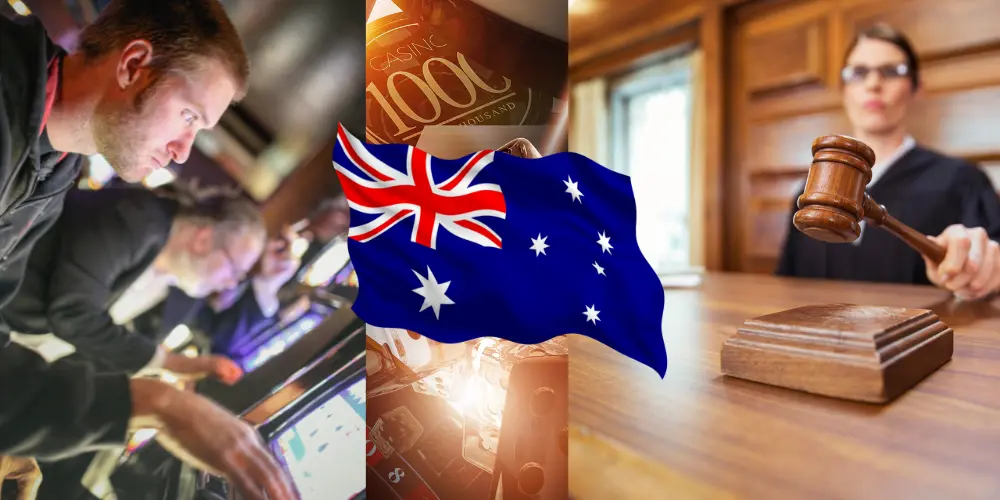As part of the recommendations from a recent federal parliamentary inquiry, this levy – though its rate is yet to be defined – is seen as a vital measure to provide a uniform oversight of the gambling industry. Currently, industry regulation is the domain of individual state and territory regulators.
Advocates argue that the new levy could also significantly diminish the influence gambling companies exert over the formulation of regulatory policies. However, some public health experts have warned that such a levy might not achieve its intended effects unless its design and implementation are carefully considered.
A Great Starting Point
The inquiry’s report posits that Australia’s licensed betting entities have skillfully directed the narrative of gambling-related harm towards personal accountability, thereby understating their own involvement and the government’s duties. It warns that this stance has had detrimental effects on Australians who are battling gambling addiction.
Lauren Levin, a practised harm reduction campaigner with Financial Counselling Australia, referred to the levy as “a great starting point,” arguing that the federal government now has “a unique chance to get this right.”
Critics of the gambling industry, such as Levin, point to the social costs associated with gambling addiction. She highlighted that while gambling firms may contribute to job creation, tax revenue, and junior sports programmes, they don’t mention the societal costs of addressing the wreckage and turmoil left in the wake of gambling addiction.
Imminent Resistance
Despite the potential benefits of the levy, the proposal has already sparked resistance among gambling companies. They’ve expressed concerns over a proposed total ban on advertising after a transition period of three years and are awaiting more information regarding the proposed levy.
The industry’s peak body, Responsible Wagering Australia, noted that gambling firms currently pay around $1.9bn in taxes that fund vital public services. Yet, it remains uncertain how much revenue the proposed levy would generate from an industry that sees an annual turnover estimated at $50bn. As debates continue, experts weigh in on the potential effectiveness of the proposed levy.
Scepticism & Potential of the Proposed Levy
Public health experts, including notable figures like Samantha Thomas, a gambling researcher at Deakin University, have expressed reservations about the effectiveness of the proposed levy. Their concern lies in the belief that such a levy may not bring about substantial changes in the operational practices of the gambling industry. They fear the levy might merely be absorbed by these corporations that make profits from pokies and as another cost of doing business, rather than compelling a shift in their tactics.
Nonetheless, Thomas sees potential in the levy. She suggests that, if applied correctly, the funds could serve a preventative role, mitigating the effects of gambling harm before they become critical issues. Thomas envisions a part of the funds being used to fuel marketing campaigns designed to unmask the industry’s tactics, revealing the often glossed-over side of gambling to the public.
Such campaigns could shed light on the strategies employed by these companies to hook players, from psychologically persuasive advertising techniques to setting up reward systems that encourage continuous play. Informing potential gamblers about these tactics might equip them to resist, or at least understand, the techniques designed to keep them gambling.
Educating the Public
In addition to these revealing campaigns, the funds could be used to disseminate clear information about the risks of gambling addiction. The aim here would be to educate the public about the signs of addiction, the dangers it poses to personal and financial health, and where to seek help if they or someone they know is struggling. By using the levy to invest in preventive education, the industry could play an active role in curbing the very harm it has been accused of exacerbating.
However, for these potentially beneficial outcomes to materialise, Thomas underscores the need for the levy to be implemented thoughtfully and for its use to be strictly governed. She warns that, if misdirected, these funds might end up serving the industry more than those it aims to help.
Taking a leaf from the UK’s book
A voluntary levy on the gambling industry was made mandatory this year in the UK to fund research, education, and treatment of gambling addiction. Australia’s levy, if implemented with the right considerations, might serve as a meaningful step towards addressing gambling-related harm.
It is now up to the Australian government to decide whether to accept the recommendation, which, if handled appropriately, could mark a significant turn in the fight against gambling addiction. The conversation will undoubtedly continue, with advocates and critics alike watching closely.

